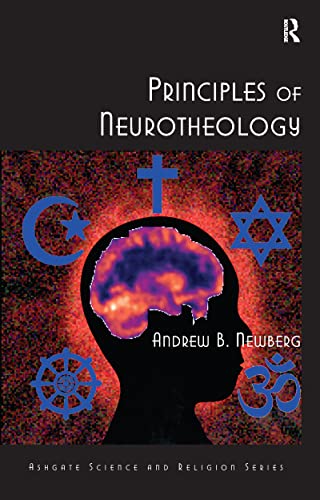Volume 36 - Issue 3
An Evaluation of the 2011 Edition of the New International Version
By Rodney J. DeckerAbstract
Evaluating a new English translation of the Bible can be extremely difficult. That is due to at least three factors. First, we have such a wealth of options already accessible in our language that any new offering seems superfluous; we are jaded by the abundance. Second, there is a cynical view that attributes all such productions to greedy commercial publishers. Third, translations are often controversial due to theological or social issues.
1. Introduction
Evaluating a new English translation of the Bible can be extremely difficult. 1 That is due to at least three factors. First, we have such a wealth of options already accessible in our language that any new offering seems superfluous; we are jaded by the abundance. Second, there is a cynical view that attributes all such productions to greedy commercial publishers. Third, translations are often controversial due to theological or social issues. In our day the question of inclusive language for gender reference is a hot-button topic that colors the discussion. A major factor that has generated heat in this area is the rhetoric of “single-issue, watchdog groups,” who tend to view any variation from their canonical party line to betray the gospel.
In light of factors such as these, perhaps it would be helpful to step outside our American culture and consider the responses to new translations in non-Western settings. Dick France recounts his experience in attending an English-speaking church service in a remote area of Nigeria. A new translation had recently been published
1 This article was originally presented at the Bible Faculty Summit held at Faith Baptist Bible College and Seminary in Ankeny, IA, July 28, 2011.
2 Dick France, “The Bible in English: An Overview,” in The Challenge of Bible Translation: Communicating God’s Word to the World; Essays in Honor of Ronald F. Youngblood (ed. G. Scorgie, M. Strauss, and S. Voth; Grand Rapids: Zondervan, 2003), 193.
3 Tyndale said to an English cleric, “If God spare my life, ere many years pass, I will cause a boy that driveth the plow shall know more of the Scripture than thou dost.” His statement echoes the preface of Erasmus’ Greek NT: “I would to God that the plowman would sing a text of the Scripture at his plow and that the weaver would hum them to the tune of his shuttle.” Both citations from Tony Lane, “A Man for All People: Introducing William Tyndale,” Christian History vol. 6, no. 4, issue 16 (1987): 7.
4 “Translators to the Reader,” 11.
5 Indeed what some call “the 1611 KJV” has been almost entirely a phantom for more than 200 years because it was revised at least six times, though each time continuing the same name as its predecessor. The last revision to bear that name was the 1769 revision by Blayney that has now been printed for over two centuries, but it is not the same as what was printed in 1611. These various revisions were due to changes in the English language. Later revisions of the same tradition have changed the name. The 1885 was known as the (English) Revised Version, the 1901 as the American Standard Version (originally, the “Revised Version, Standard American Edition”), the 1952/1962/1971 as the Revised Standard Version (and NRSV, 1989), and the 2001/2007 as the English Standard Version.
6 The KJV, despite celebrating 400 years, has not reigned as sole monarch on the English Bible throne during all of that time. It was more than a half century after 1611 before it became the preferred translation, and for somewhat more than the last half century it has had to share that throne with other translations. The KJV dropped from the number one position as the best-selling English Bible in 1988; the NIV has held that position since then (email correspondence from Verne Kenney, Executive Vice President, Zondervan, October 17, 2011).
7 The KJV translators anticipated this: “whosoever attempteth any thing for the publike (especially if it appertaine to Religion, and to the opening and clearing of the word of God) the same setteth himselfe upon a stage to be glouted upon by every evil eye, yea, he casteth himself headlong upon spikes, to be gored by every sharpe tongue. For he that medleth with mens Religion in any part, medleth with their custome, nay, with their freehold, and though they find no content in that which they have, yet they cannot abide to heare of altering” (“The Translators to the Reader,” [p. 2], 1611 printing of KJV).
8 Although a digital edition of the text was made available on the web on November 1, 2010, the revision was not officially published until spring 2011.
9 Official data on the translation and its history can be found at http://www.thenivbible.com/translation and http://www.thenivbible.com/translation/history (thenivbible.comis a Zondervan site). See also the site of the Committee on Bible Translation (CBT): http://www.niv-cbt.org. (URLs cited in this paper were all accessed in June 2011.)
10 As of the 1970s the only three alternatives of significance were (1) the RSV (largely rejected by conservatives), a revision in the KJV/RV/ASV line of translations, (2) the NASB, which had just been published in 1971 (the NT had been released in 1963), and (3) the Modern Language Bible (1969, which revised the Berkley Version, 1959). The MLB never caught on, and even after its 1995 update, the NASB has managed only a niche market position (at one time #3 when choices were limited, it is now #10 in sales in the US), used primarily by those who perceive it to be “more accurate” since it is “more literal” (superficial judgments reflecting little understanding of what is involved in translation) and by first year language students who are comforted by the fact that it is the closest to their own attempts at putting the biblical text into something approximating English! (That in itself should say something about the quality of the translation.) Such perspectives are encouraged by the copyright owner, whose official web page declares, “At NO point did the translators attempt to interpret Scripture through translation. Instead, the NASB translation team adhered to the principles of literal translation. This is the most exacting and demanding method of translation, requiring a word-for-word translation that is both accurate and readable. This method follows the word and sentence patterns of the original authors” (http://www.lockman.org/nasb).
11 Since the 70s there has been a relative flood of new translations of which the NASB and NIV were the harbingers. These include the GNB (1976), NJB (Catholic, 1985), NCV (1987), NRSV (1989), REB (1989, which revises the NEB, 1970), CEV (1995), God’s Word (1995, which succeeds Beck’s AAT, 1976), NIVI (1996), NLT (1996), ESV (2001; 2nd ed., 2007), TNIV (2002), HCSB (2004; 2nd ed., 2010), NET (2005), NAB (Catholic, 1970; 4th ed., NABRE, 2011), ISV (2011), and CEB (2011).
12 The July 2011 Best Sellers List from the Christian Booksellers Association shows the NIV to be the number one selling Bible in the US (a position it has now held for quite a few years), followed in order by the NLT, KJV, NKJV, ESV, RV1960 (Spanish), HCSB, Message, NIrV, and NASB. This ranking is based on unit sales through May 31, 2011 ( http://www.cbaonline.org/nm/documents/BSLs/Bible_Translations.pdf ). Only the NLT and more recently the ESV have begun to see widespread use.
13 Two other related translations are based on the NIV: the British NIVI (1996 by Hodder and Stoughton) and more recently the TNIV (2005)—an unsuccessful attempt by the publisher to replace the NIV.
14 Both in this section and the remainder of the paper I focus almost entirely on the NT since that is my area of major study. I have not read the NIV11 OT other than a few scattered passages.
15 I have addressed this issue in much greater detail in “The English Standard Version: A Review Article,” Journal of Ministry and Theology 8:2 (2004): 5-56, earlier versions of which may be found at http://www.ntresources.com/esv.htm.
16 These two approaches have sometimes been called “literal” and “dynamic” equivalence. I have detailed the problems with such terminology in the article cited in the previous footnote.
17 This is not necessarily a “thought for thought” translation, but one that alters the grammatical form when necessary to preserve accurate meaning. In some cases form and meaning are interrelated, and in such cases functional equivalence attempts to preserve the necessary formal elements. But in most instances the form is language-specific and is not essential to expressing the meaning in another language. In many cases it cannot be maintained. Every translation, including the most formal, makes many substantial revisions to the form of the original.
18 This scale is not proportiona
Rodney J. Decker
Rod Decker is professor of New Testament and Greek at Baptist Bible Seminary in Clarks Summit, Pennsylvania.
Other Articles in this Issue
In the November 2009 edition of Themelios, Dane C...
Jonathan Edwards (1703-1758) is remembered today as a saint, scholar, preacher, pastor, metaphysician, revival leader, theologian, Calvinist—the list goes on...
Almost two decades ago I wrote an essay titled " When Is Spirituality Spiritual? Reflections on Some Problems of Definition ...
He was the youngest son of elderly parents. His childhood was secluded and unhappy, which might in some measure account for his lifelong melancholy...






